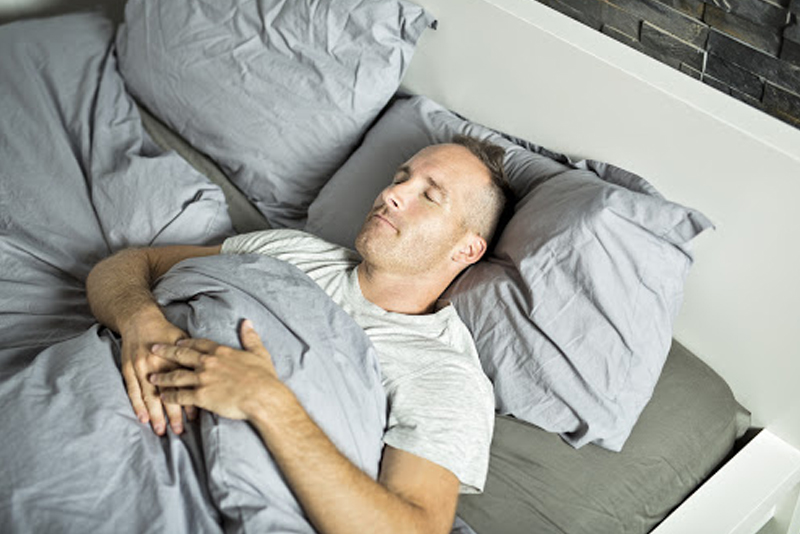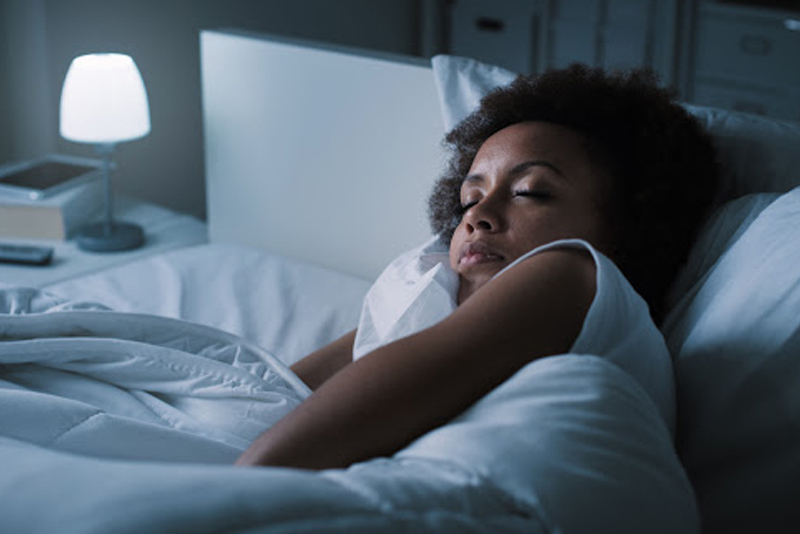How To Sleep On Your Back – We don’t really pay much attention to our sleeping position until we wake up feeling sore and uncomfortable. That kink in your back or pain in your neck and shoulders can prevent you from getting good sleep throughout the night and ruin your good posture during the day. Research shows that not getting a good night’s sleep can result in sleep deprivation and impact our pain perception. Conversely, those in pain find it harder to fall asleep and experience a lighter sleep making pain worse throughout the day.

Why Sleep On Your Back?
Are you looking for a good night’s sleep? There are plenty of reasons why learning how to sleep on your back can be beneficial to a good night’s rest. Here is why sleeping in this position is good for you.
Reduces aches and pain
Studies show that sleeping on your back can reduce upper body aches since there is less pressure on the joints, such as on your neck and shoulders as well as the hips. Sleeping on your back allows your upper body to rest in a natural position.
Prevents heartburn
Another benefit to this sleeping position is that it reduces or prevents heartburn. Those who suffer from acid reflux may find they can finally get a good night’s sleep. Make sure you use a pillow that elevates and supports your neck so that your stomach is below your esophagus to prevent food or acid from coming up your digestive tract [1].
Less pressure on your spine
Learning how to sleep on your back can also help lessen the pressure on your spinal alignment. This is because your body weight is evenly divided when you lie down, as long as you are sleeping on a good mattress.
Less neck pain
Another reason you should sleep on your back is that there is less pressure on your neck because your head, spine, and neck are in a neutral position. This helps prevent morning neck pain and stiffness.
Cosmetic benefits
Spending the night hours without rubbing your face in a pillow can reduce your chance of forming wrinkles.

Tips For How To Sleep On Your Back
Now that you know why sleeping on your back is good for you, you’re probably wondering exactly how to sleep on your back when you’re used to sleeping in a fetal position, sleeping on your stomach, or on your side. Let’s find out how you’ll can enjoy this position at night.
Place a spare pillow under your knees
One of the cheapest and easiest ways for you to learn how to sleep on your back is by placing a pillow under your knees. This is more comfortable compared to just lying on your back with legs your straight. This is because your spine is following its natural curve which eases the pressure on your back.
Surround yourself with pillows
Another trick to help you sleep on your back is to box yourself in with body pillows. Place one on each side to prevent you from turning on your side or stomach [3].
Invest in a positioning pillow
A positioning pillow makes it more comfortable for you to sleep on your back. One reason why this is a good investment is that it keeps your head in place. When positioning this pillow, make sure that your neck is following the natural curvature of your spine. If your pillow is too high or too low, you might experience pain in your neck.
Bring arms up to the sides of your head
Another tip for how to sleep on your back is to place your arms beside your head.
Open your legs a bit
Opening your legs a bit into the starfish position may help you stay grounded.
Check your mattress
A sagging mattress is not conducive to sleeping on your back because there is not enough support for your lower back. A mattress made of memory foam can be helpful cushioning your joints and the bony parts of your body, such as the hips—resulting in fewer pressure points. A good mattress is key to ensuring restorative hours of sleep.
Provide support to your neck
How you arrange the pillows can influence how comfortable you will feel while sleeping on your back. If you can’t find a suitable pillow for your needs, roll a towel and place it underneath your neck for added support. This will help prevent any pain you will feel the following day if your pillow lacks support.
Be persistent
If you are comfortable sleeping on your side but would like to learn how to sleep on your back, you should be persistent. Practicing the steps above can help you learn to sleep this way.

When Not To Sleep On Your Back
Obstructive sleep apnea
Do you snore? This sleeping position is not recommended for those who snore. People snore when the throat muscles and tongue relax making the airway partially obstructed. The resulting air flow makes the surrounding tissues vibrate. That noise is called snoring. Conditions, such as obstructive sleep apnea can facilitate an airway obstruction. Obstructive sleep apnea results in apnea; a condition where breathing is interrupted. If this occurs during sleep, it is termed sleep apnea. A person may also snore due to excessive weight gain that results in “floppy tissue” or because of genetics. In any event, excessive snoring can disrupt your circadian rhythm as it can make it both difficult to fall asleep and stay asleep [2].
Pregnancy
Sleeping in the fetal position on the left side is recommended for women going through pregnancy. The fetal position helps prevent the uterus from pressing against your liver and other internal organs, making it better for babies and pregnant women. While the fetal position is the most popular position for sleeping, remaining curled in a too-tight fetal position for too long can cause issues with your spinal alignment. What’s more, staying in this cramped position can cause your muscles to tighten up which can lead to pain as you uncurl yourself. Internal organs can also get squeezed and blood flow may become impeded. Those who do sleep in the fetal position should make an effort to sleep on their left side. Sleeping on your left side has a number of benefits for the body. Your spine can rest in its natural curve. Research studies suggest that the brain may do a better job of clearing waste if you sleep on your left side. To gain a better sleep experience, try to stretch out a bit. Your upper airway, lungs, and diaphragm may experience better airflow as your body is stretched out.
Back pain
Some people complain of pain or pressure on their hips, pelvis or legs when sleeping in the fetal position. If this is the case, place a firm pillow between your knees to allow for better body alignment.

A Last Word How To Sleep On Your Back
Sleeping on your back does have its benefits, but this doesn’t mean that everyone should do so. There are certain exceptions to the rules mentioned above such as pregnancy, obstructive sleep apnea, or acid reflux. It does take some time for you to learn how to sleep on your back which is why persistence is key. But over time, you may find that you wake up with fewer aches and pains.
How To Sleep On Your Back Resources:
[1] Business Insider; Experts say lying on your back is the best sleeping position — here’s why, Lindsay Dodgson, April 06, 2018.
[2] OnHealth; Sleep, What’s the Best Sleep Position?.
[3] Health; I’ve Never Been Able to Sleep on My Back—Here’s Why I’m Learning How to Do It, Sarah Klein, April 06, 2018.


